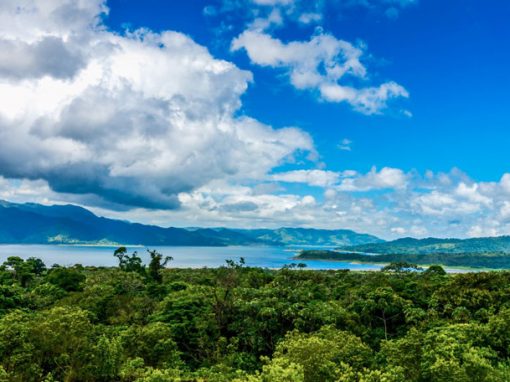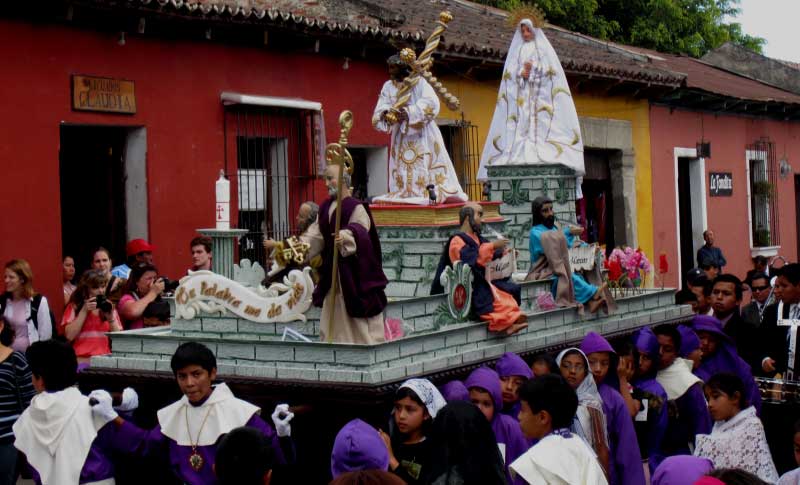Costa Rica sits directly on the Ring of Fire, where the Pacific oceanic plate crashes and digs into the continental Caribbean plate in a process called subduction. The result is intense geothermal and seismic activity in the form of earthquakes and volcanic explosions, which are more frequent in Costa Rica than in any other western hemisphere country. The high incidence of volcanic activity brings benefits to the country’s farmers in the form of mineral-rich soils which are replenished by falling ash.
With 5 active volcanoes and close to 100 others that are dormant or extinct, Costa Rica has become a preferred vacation spot for travelers who want to witness Planet Earth in action. Occasional flare-ups remind Ticos and travelers of the powerful forces that shape the earth beneath their feet. Tourists are reminded to stay safe on a volcano tour by taking simple precautions.
Arenal, nature’s fireworks
After 400 years of dormancy, Arenal Volcano (1,670 m) exploded to life on July 29, 1968, devastating the quaint town of La Fortuna de San Carlos. Smaller eruptions continued, sometimes tallying up to 40 times a day in its most active phase, and a stream of travelers followed. Nature’s fireworks display was especially dazzling after dark. Lava spewed from the perfectly conical peak of Arenal and molten rocks sputtered out like popcorn, leaving fiery trails of red and orange on the mountain’s slopes.
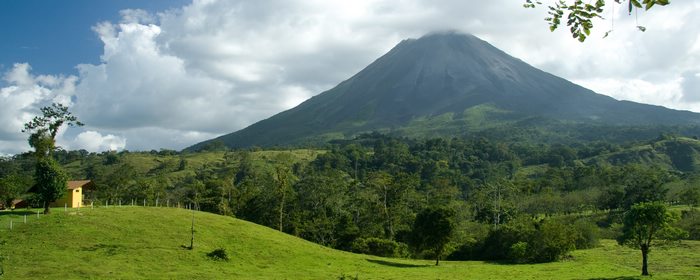 Arenal Volcano is deep slumber, but the town of La Fortuna continues to draw visitors.
Arenal Volcano is deep slumber, but the town of La Fortuna continues to draw visitors.
Photo by Celso Diniz/ Dreamstime
The volcano has been quiet since 2010, but La Fortuna remains a top spot for trips to Costa Rica thanks to its natural hot springs and countless outdoor activities. When it is not shrouded in low-hanging clouds, Arenal Volcano is a photogenic peak. Its cone is visible from the town’s streets, from the swimming pool patios of hotels in and around La Fortuna, and from the very long lake, also called Arenal, that stretches away from the volcano’s slopes.
Irazú, the rumbling mountain
At 3,432 m, Irazú Volcano is the highest active volcano in Costa Rica and the highest mountain of the Central Range. Among locals, it is known as El Coloso (The Colossus). Irazú’s name derives from an indigenous word that means the “mountain of rumbling and trembling”. The volcano famously erupted on March 19, 1963 – coinciding with the first day of a visit by U.S. President John F. Kennedy – and covered San Jose and the nearby highlands in layers of ash.
 At 11,000 feet, Irazú Volcano greets visitors in green and panaromic views of the surrounding seismic peaks
At 11,000 feet, Irazú Volcano greets visitors in green and panaromic views of the surrounding seismic peaks
Photo by rbreve/Flickr
Hikers who reach the summit encounter five craters, including the Principal Crater, with steep walls that drop 300 meters down, a diameter that stretches 1,050 meters across, and a green lake at its bottom. The smaller Diego de la Haya crater also has a lagoon whose colors can shift from emerald green to crimson red depending on its mineral concentrations. Plant growth and wildlife are scarce at the summit, but the patches of montane forest grow dense at lower elevations. On rare clear days, lucky visitors can spot the Pacific Ocean to the west and the Caribbean Sea to the east.
Poás, on the edge of an acid lake
A popular day trip from San José to Poás Volcano (2,708 m) traverses the varied landscapes of the Central Valley, from flower fields and strawberry farms to cloud forests at higher altitudes. The road leads right to the lip of a caldera and a viewing platform offers a stunning look at the jade-colored lake at its depths, Laguna Caliente, which more recently is colored steamy white. The crater lake is quite acidic, with a pH close to 0. The interaction of rainfall with the highly sulfurous crater results in puffs of acid fog that can irritate the eyes and lungs.
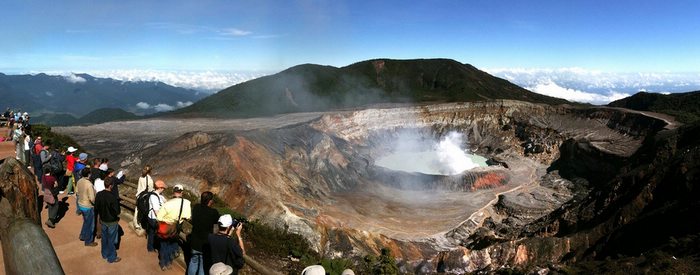 At the crater of the Poás Volcano, sulfuric furmaroles burst upwards, ruffling the calm surface of the ethereal lake.
At the crater of the Poás Volcano, sulfuric furmaroles burst upwards, ruffling the calm surface of the ethereal lake.
Photo by Sandra Cohen-Rose & Colin Rose/Flickr
Poás Volcano remains mildly active since its last significant eruption in 2009. Seismic movements, geyser-like explosions, and phreatic eruptions of mud and ash occur intermittently. In June 2013, temperatures rose high enough that the peak of Poás looked incandescent at night. The best time to visit Poás is in the morning as clouds tend to obstruct views in the afternoon.
Some more fiery inner workings
Turrialba Volcano, visible from Irazu, is one of Costa Rica’s most recently active volcanoes and it occasionally sends up plumes of smoke. On the northwest coast, in the sun-drenched Guanacaste Province, Tenorio Volcano is surrounded by forests, hot springs, scattered geysers and a sky-blue river called Rio Celeste. Finally, the steep-sloped Rincon de la Vieja Volcano also draws its fair share of visitors, although the crater is sometimes off-limits. Its name in Spanish means “old woman’s corner” and, according to various local legends, its frequent columns of smoke represent either an old witch’s moments of fury or a kind old lady’s cooking fires.
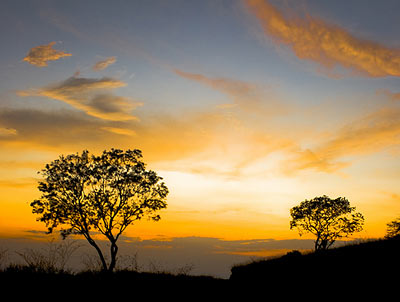 Rincon de la Vieja National Park offers an ideal setting for hiking, bird-watching and volcano-climbing.
Rincon de la Vieja National Park offers an ideal setting for hiking, bird-watching and volcano-climbing.
Photo from Dreamstime
Articles, videos, and more
Websites:
Up-to-date volcano activity in Costa Rica on Volcano Discovery
List of volcanoes in Costa Rica
5 Top hot springs in Costa Rica
Maps:
Locations of volcanoes in Costa Rica
Videos:
Arenal nighttime eruption
Poas phreatic eruption
Anabel has been exploring the length and width of South America since 2010. Ditching preconceptions, settling into the local pace, and embracing the unexpected are the tenets of her philosophy of travel – and life.

